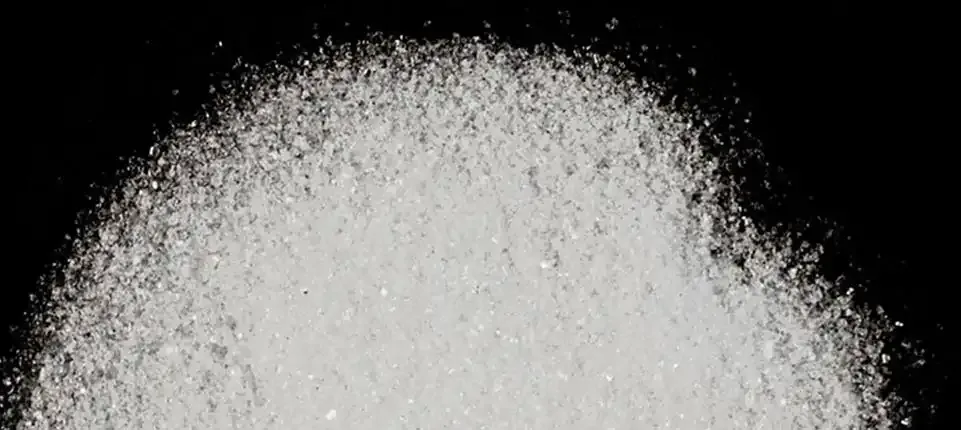October 19, 2022
Ketamine use in Australia

Ketamine has risen in popularity in the past few years.
Although it isn’t as widely used as drugs like alcohol or cannabis, recreational use is gradually increasing.1
The amount of people who recently used ketamine doubled between 2016 and 2019 – from 0.4% to 0.9% of the population. People aged in their 20s are the group most likely to be using ketamine.1
During the COVID-19 lockdowns in 2020-21, ketamine use by people who regularly use drugs rose by 21%.2
The cause of the upward trend isn’t clear, but some reasons could be:
- greater availability and lower price compared to other drugs
- changing preferences during stay-at-home lockdowns
- self-medicating to treat anxiety or depression.3
What is ketamine?
Ketamine is a dissociative drug. It works on the brain to produce changes in what you can see and hear. It can also create a sense of detachment from reality.
The effects vary a lot depending on the person, the amount taken and whether it’s mixed with any other drugs.
Some effects include:
- feeling happy and relaxed
- lower sensitivity to pain
- visual and auditory hallucinations
- feeling disconnected from your body.4
How is it used?
Ketamine was originally developed in the 1960s for medical use as an anaesthetic.3
Today, medical practitioners and veterinarians still use it for this purpose, but it’s also started being used to treat depression.
You can find out more in our article: Can ketamine help treat depression?
Ketamine is also used illegally as a recreational drug.
Recreational use
Just like any other drug, people use ketamine for a variety of reasons. Some include:
- to relax
- to help with anxiety
- for fun
- to experience a ‘dreamlike’ state.3, 5
It’s typically used as a ‘party drug’, at festivals, clubs or other party spaces.
But during the pandemic lockdowns, ketamine was also increasingly used by people at home, as way to relax or unwind.2, 3
While ketamine use is increasing, the frequency of use remains low.3
People that used ketamine did so on average once every 2 months in 2021.2
Medical vs recreational ketamine
There’s a big difference between legal ketamine used in medical settings and illegal ketamine used to get high.
Medical ketamine is highly regulated – this means we know how it’s made and that it’s of a high quality, just like other medicines.
But illegal ketamine isn’t regulated, so there’s no way to know how it was made, the strength or what else it might be mixed with.
Some batches might be very strong, and some may contain other drugs.
In fact, of 14 ketamine samples recently presented to Canberra’s new drug testing facility only six actually contained ketamine. Four samples instead consisted of a new psychoactive substance with unstudied and unknown effects. 6
This is dangerous because not knowing what you’re taking can increase the risk of overdose and unwanted side effects.7
What is ‘S ketamine’?
You may or may not have heard of ‘S ketamine’ (esketamine).
Esketamine is chemically very similar to ketamine.
The main difference is esketamine is more potent, and so less of the drug is needed to produce similar effects.4
It’s about 2-4 times more potent, which is one of the reasons why it’s being used in depression treatments.8
With the recent interest in medical ketamine, some dealers are claiming to be selling esketamine.9
But, this is unlikely, as esketamine is only available clinically.
Illegally sold ketamine is much more likely to be ‘racemic’ which is a mixture of both esketamine and R-ketamine.8, 9
R-ketamine and esketamine are mirror images of each other, but not identical – much like your left and right hand.
There’s no way to know the type of ketamine, or what else might be mixed in, without specialist testing equipment.
What are the risks of ketamine?
Ketamine can have a range of unpleasant effects including:
- nausea and vomiting
- dizziness
- rapid heartbeat
- difficulty moving.4, 5, 10
Mixing ketamine with other drugs can exaggerate these effects.
People often drink while using ketamine.11 This can increase the effects, and makes nausea and vomiting more likely.11, 12
Drinking while using ketamine can also increase the risk of bladder problems.11
Long-term heavy use of ketamine can lead to ‘ketamine bladder syndrome’.
This is a painful condition that can cause incontinence, difficulty holding in urine and ulcerations in the bladder.5
Anyone with this syndrome should see a health professional and stop using ketamine.
Staying safe when taking ketamine
There’s no safe level of drug use.
But, if you do decide to use ketamine here are some tips on how to minimise harm.
- Always try a small amount (1/4 of a dose) first, and wait to see how it affects you.
- Try not to use alone.
- Don’t attempt any physical activities like swimming, jumping or climbing anything high. Ketamine impacts coordination and balance, making injury more likely.3, 13
- If you feel overwhelmed remember that what you’re feeling is temporary and will soon pass. Try taking some deep breaths and speaking to someone you trust if they’re nearby.
- Know how long ketamine stays in your system, so you’ll know when it’s safe to drive, be on site or work machinery. Find out with the Drug Duration Calculator.
The risk of death from a ketamine overdose is low, but mixing ketamine with other drugs can increase the risk.10, 13
This is especially true if ketamine is mixed with depressant drugs that slow the heart rate or breathing, including alcohol, benzodiazepines or opioids.11, 14
If you or someone else are experiencing any of these symptoms call an ambulance by dialling triple zero (000):
- seizure or convulsions
- high blood pressure, fast heartbeat
- inability to move
- unconscious and not able to be woken up. 10, 15, 16
Regular ketamine use can also lead to dependence.5
If you’re worried about your drug use you can contact the National Drug and Alcohol Hotline for confidential information about treatment and support and to be linked to support services in your state on 1800 250 015.
Path2Help
Not sure what you are looking for?
Try our intuitive Path2Help tool and be matched with support information and services tailored to you.

- Australian Institute of Health and Welfare. National Drug Strategy Household Survey 2019. Canberra2020 [05.10.2022]. Available from:
- Sutherland R, Uporova J, Karlsson A, Price O, Chandrasena U, Swanton R, et al. Australian Drug Trends 2021: Key Findings from the National Ecstasy and related Drug Reporting System (EDRS) Interviews: NDARC; 2021 [10.10.2022].
- de Souza T.Kick-start for ket: how ketamine emerged as Australia’s lockdown means of escape 2022 [05.10.2022].
- Molero P, Ramos-Quiroga JA, Martin-Santos R, Calvo-Sánchez E, Gutiérrez-Rojas L, Meana JJ, et al. Antidepressant Efficacy and Tolerability of Ketamine and Esketamine: A Critical Review. CNS drugs [Internet]. 2018 [05.10.2022].
- Van Amsterdam J, Van Den Brink W. Harm related to recreational ketamine use and its relevance for the clinical use of ketamine. A systematic review and comparison study. Expert Opinion on Drug Safety [Internet]. 2022 [06.10.2022]; 21(1):[83-94 pp.].
- CanTEST. 13 August - 20 September 2022 Results Summary 2022 [18.10.2022].
- Groves A. 'Worth the test?' Pragmatism, pill testing and drug policy in Australia. Harm Reduction Journal [Internet]. 2018 [06.10.2022]; 15(1):[12 p.].
- Salahudeen MS, Wright CM, Peterson GM. Esketamine: new hope for the treatment of treatment-resistant depression? A narrative review. Therapeutic Advances in Drug Safety [Internet]. 2020 [07.10.2022]; 11:[1-23 pp.].
- DanceSafe. Ketamine 2022 [06.10.2022].
- Castellani D, Pirola GM, Gubbiotti M, Rubilotta E, Gudaru K, Gregori A, et al. What urologists need to know about ketamine-induced uropathy: A systematic review. Neurourology and Urodynamics [Internet]. 2020 [07.10.2022]; 39(4):[1049-62 pp.].
- Kobayashi NHC, Farias SV, Luz DA, Machado-Ferraro KM, Conceição BCd, Silveira CCMd, et al. Ketamine plus Alcohol: What We Know and What We Can Expect about This. International Journal of Molecular Sciences [Internet]. 2022 [06.10.2022]; 23(14).
- DanceWize NSW. Ketamine 2022 [07.10.2022].
- Stewart AC, Peacock A, Djordjevic F, Cossar R, Salom C, Lenton S, et al. Ketamine Use Among People Who Regularly Use Ecstasy and Other Illicit Stimulants in Australia: Trends and Characteristics of Use, 2009-2019. Journal of Studies on Alcohol and Drugs [Internet]. 2021 [06.10.2022]; 82(2):[188-96 pp.].
- Janssen-Cilag Pty Ltd. Australian Product Information SPRAVATO® esketamine hydrochloride NSW 2021 [07.10.2022].
- Morgan CJA, Curran HV. Ketamine use: a review. Addiction [Internet]. 2012 [10.10.2022]; 107(1):[27-38 pp.].
- Kim JH, Lee CK, Yu SH, Min BD, Chung CE, Kim DC. Ketamine-induced generalized convulsive seizure during procedural sedation. Archives of Craniofacial Surgery: ACFS [Internet]. 2021 [10.10.2022]; 22(2):[119-21 pp.].


